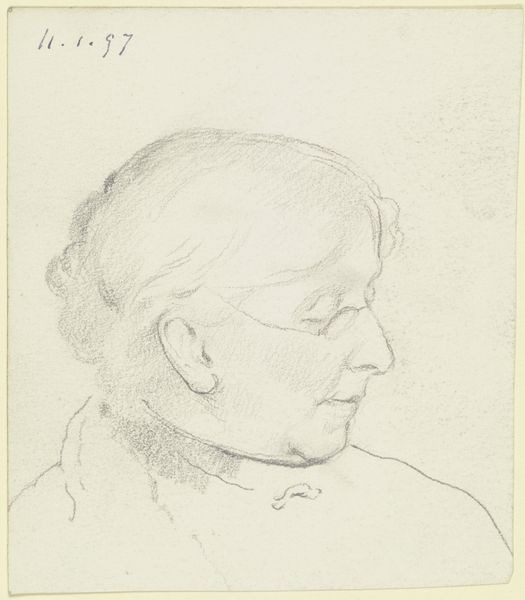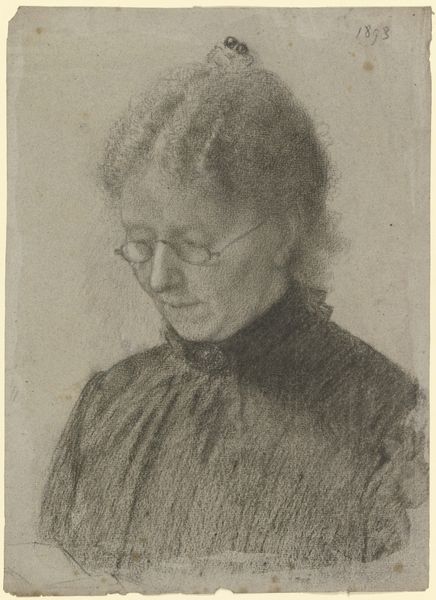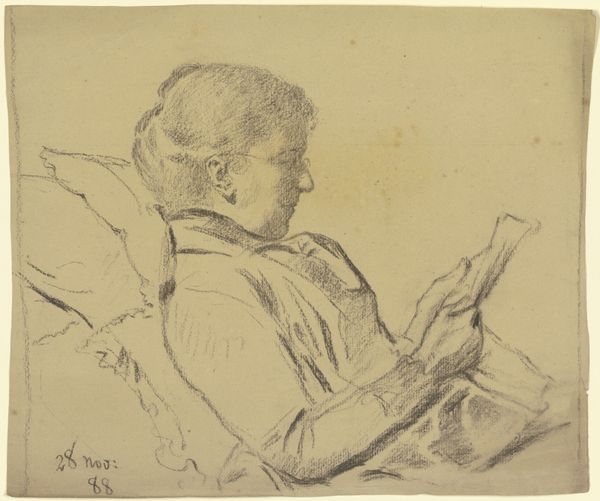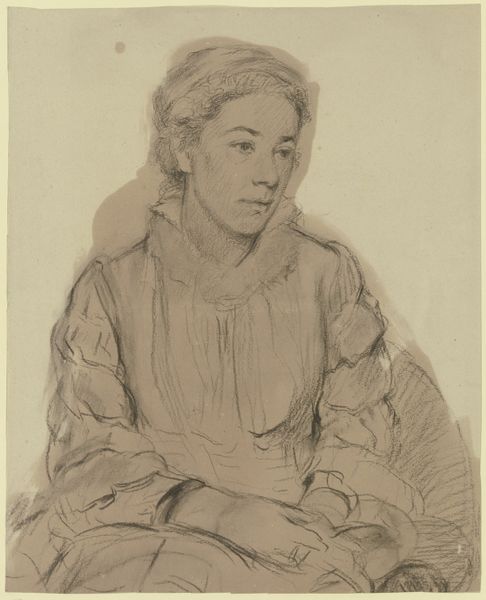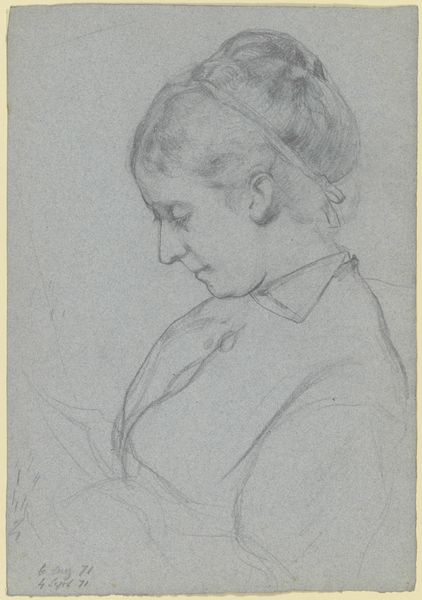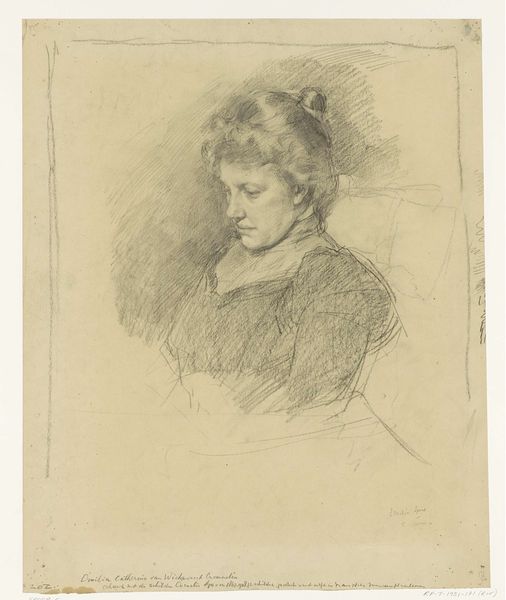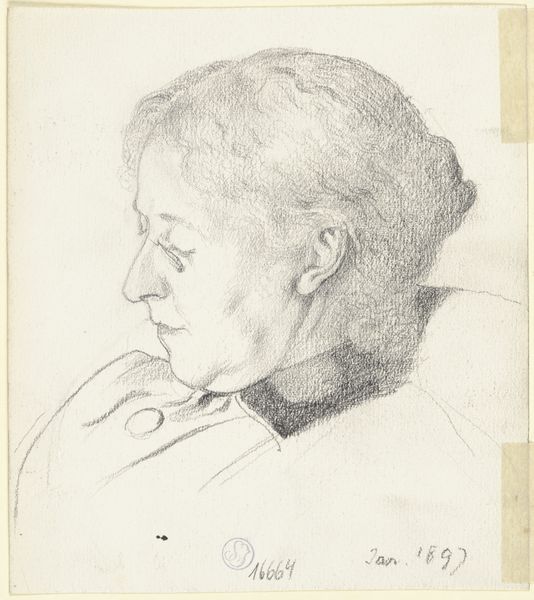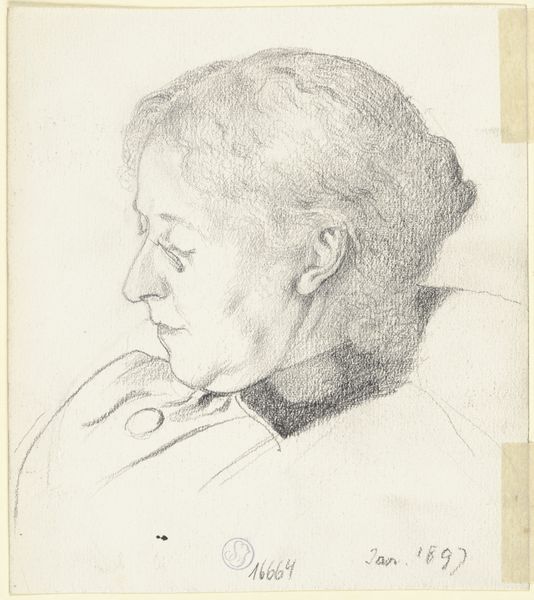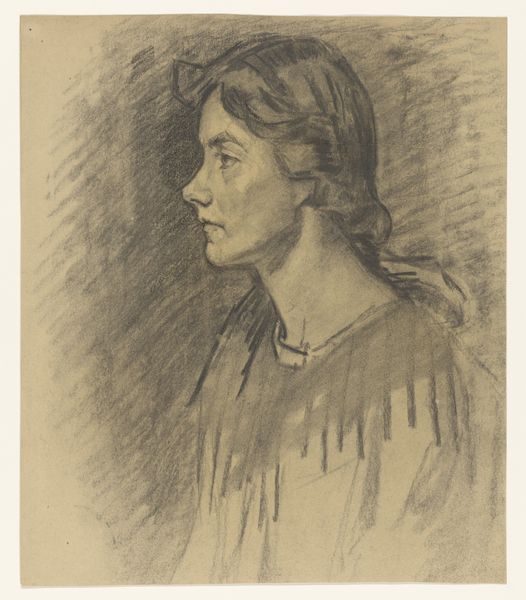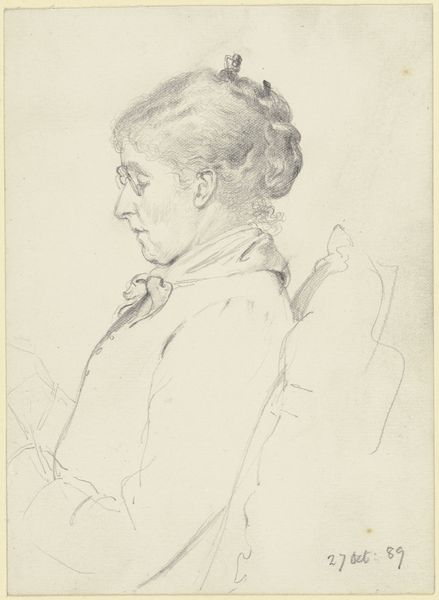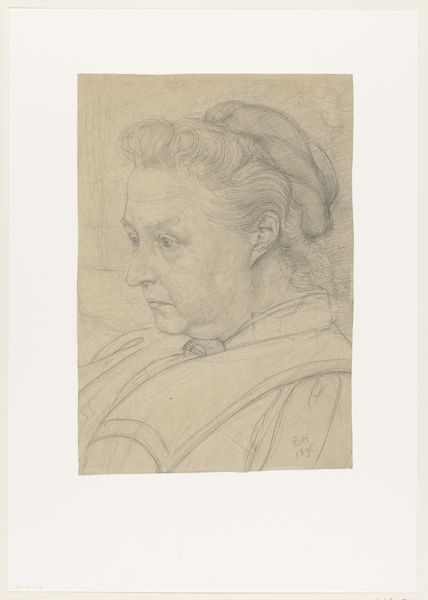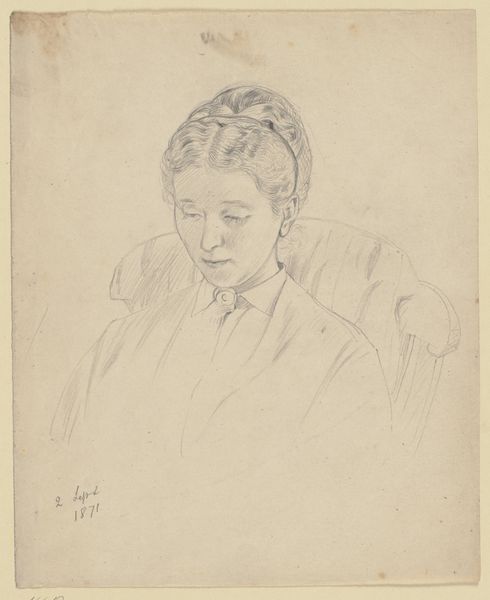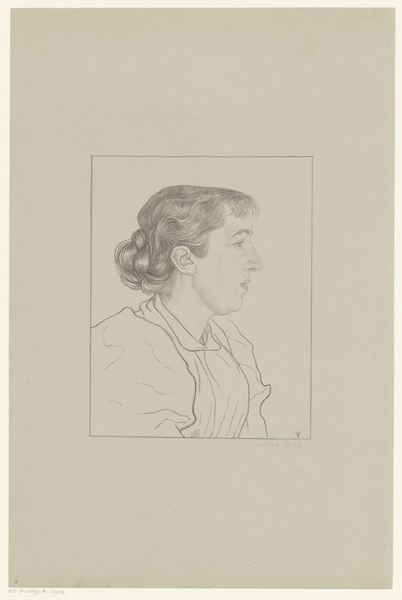
drawing, paper, dry-media, pencil, graphite
#
portrait
#
drawing
#
16_19th-century
#
paper
#
dry-media
#
pencil drawing
#
pencil
#
graphite
#
portrait drawing
Copyright: Public Domain
Editor: We’re looking at "Luise Scholderer, lesend mit Katze," a portrait drawing, made with pencil on paper by Otto Scholderer, sometime in the 19th century. It gives off a feeling of quiet domesticity, but I'm also struck by the visible marks of the pencil and the paper itself. What do you see when you look at this drawing? Curator: Well, the pencil marks are exactly where I want to start! Notice how Scholderer builds up tone with short, repetitive strokes. This isn't just about depicting Luise; it’s about the *doing* of portraiture, the labor involved. Consider the availability of pencils at the time. Graphite processing, transportation—each step impacts the final product. The texture of the paper itself influences how the graphite adheres, right? Editor: That’s true, the texture definitely adds a sort of…roughness that’s interesting given the intimacy of the scene. But does the inclusion of Luise change how we read it? Curator: Absolutely. It becomes about the cultural position of women and reading. Were women encouraged to engage in intellectual pursuits? Was reading seen as productive labor, or merely a leisure activity? How does her posture and clothing signal class and access to resources – even access to light to read by? These aren't just aesthetic choices, but social statements embedded within the artistic process. Editor: I hadn't considered reading as labor or access…it’s usually seen as such a private activity. Curator: And it *is*, but consider the historical context! Who had the privilege of this 'private activity'? Scholderer's choice of readily available materials like pencil and paper underscores this interplay of access and limitation in both art-making and the lives of his subjects. It highlights art not as transcendent ideal, but rather work and making that’s enmeshed in the realities of the world. Editor: Thinking about the materials and what they represent really opens up how to view it. Thank you! Curator: Of course! It's amazing what looking closely at the process can reveal.
Comments
No comments
Be the first to comment and join the conversation on the ultimate creative platform.
